Granular Stack Density’s Influence on Homogeneous Fluidization Regime: Numerical Study Based on EDEM-CFD Coupling
Abstract
:1. Introduction
2. Experimental Phase
2.1. Experimental Device
2.2. Experimental Procedure
3. Numerical Model and Method
3.1. Numerical Model
3.2. EDEM-CFD FLUENT Coupling Details
3.3. Materials and Simulation Procedures
3.4. Simulation Domain and Meshing
3.5. Image Processing
3.6. Transient Analysis
4. Results and Discussions
4.1. Experimental Observation
- The loose stack fluidized quickly in a turbulent and chaotic manner from the injection zone to the top of the granular layer, with regular expansion of the entire stack.
- The dense stack was destabilized in a different way. An upward movement of the assembly without deformation in the material was observed. Moreover, the lower surface was gradually destabilized, thus releasing a shower of grains that gradually supplied the fluidized zone. The size of the ascending grain layer in solid translation motion decreased regularly while the fluidized layer increased.
4.2. Numerical Results and Discussions
5. Conclusions
Author Contributions
Funding
Institutional Review Board Statement
Informed Consent Statement
Data Availability Statement
Conflicts of Interest
References
- Yates, J.G.; Lettieri, P. Fluidized-Bed Reactors: Processes and Operating Conditions; Springer: Berlin/Heidelberg, Germany, 2016. [Google Scholar]
- Rhodes, M.J. Introduction to Particle Technology; John Wiley: Chichester, UK; New York, NY, USA, 1998. [Google Scholar]
- Montell, E.P.; Toraldo, M.; Chareyre, B.; Sibille, L. Localized fluidization in granular materials: Theoretical and numerical study. Phys. Rev. 2016, 94, 52905. [Google Scholar] [CrossRef] [Green Version]
- Cui, X.; Li, J.; Chan, A.; Chapman, D. A 2D DEM-LBM study on soil behaviour due to locally injected fluid. Particuology 2012, 10, 242–252. [Google Scholar] [CrossRef]
- Philippe, P.; Badiane, M. Localized fluidization in a granular medium. Am. Phys. Soc. 2013, 87, 42206. [Google Scholar] [CrossRef] [PubMed]
- Zoueshtiagh, F.; Merlen, A. Effect of a vertically flowing water jet underneath a granular bed. Am. Phys. Soc. 2007, 75, 056313. [Google Scholar] [CrossRef]
- Philippe, P.; Mena, S.; Brunier-coulin, F.; Curtis, J. An experimental study of the transient regime to fluidized chimney in a gran-ular medium. Powders Grains 2017, 140, 09030. [Google Scholar]
- Philippe, P.; Cuéllar, P.; Luu, L.; Mena, S.; Curtis, J.S. Localized fluidization in a granular medium: Parametric study with a physical model of ‘sand boiling’. In Scour and Erosion: Proceedings of the 8th International Conference on Scour and Erosion (Oxford, UK, 12–15 September 2016); CRC Press: Boca Raton, FL, USA, 12–15 September 2016; p. 7, ⟨hal-02605288⟩. [Google Scholar]
- Alsaydalani, M.O.A.; Clayton, C.R.I. Internal Fluidization in Granular Soils. J. Geotech. Geoenviron. Eng. 2014, 140, 4013024. [Google Scholar] [CrossRef]
- Perry, R.H.; Green, D.W.; Maloney, J.O. Perry’s Chemical Engineers’ Handbook, 7th ed.; McGraw-Hill: New York, NY, USA, 1997. [Google Scholar]
- van Buijtenen, M.S.; van Dijk, W.J.; Deen, N.G.; Kuipers, J.A.M.; Leadbeater, T.; Parker, D.J. Numerical and experimental study on multiple-spout fluidized beds. Chem. Eng. Sci. 2011, 66, 2368–2376. [Google Scholar] [CrossRef]
- MacDonald, J.F.; Bridgwater, J. Void formation in stationary and moving beds. Chem. Eng. Sci. 1997, 52, 677–691. [Google Scholar] [CrossRef]
- Agarwal, G.; Lattimer, B.; Ekkad, S.; Vandsburger, U. Influence of multiple gas inlet jets on fluidized bed hydrodynamics using Particle Image Velocimetry and Digital Image Analysis. Powder Technol. 2011, 214, 122–134. [Google Scholar] [CrossRef]
- Hong, R.Y.; Guo, Q.J.; Luo, G.H.; Zhang, J.Y.; Ding, J. On the jet penetration height in fluidized beds with two vertical jets. Powder Technol. 2003, 133, 216–227. [Google Scholar] [CrossRef]
- Merry, J.M.D. Penetration of vertical jets into fluidized beds. AIChE J. 1975, 21, 507–510. [Google Scholar] [CrossRef]
- Bonelli, S. Erosion in Geomechanics Applied to Dams and Levees; Wiley: Hoboken, NJ, USA, 2013. [Google Scholar]
- Chetti, A.; Benamar, A.; Hazzab, A. Modeling of Particle Migration in Porous Media: Application to Soil Suffusion. Transp. Porous Media 2016, 113, 591–606. [Google Scholar] [CrossRef]
- Suzuki, K.; Bardet, J.-P.; Oda, M.; Iwashita, K.; Tsuji, Y.; Tanaka, T.; Kawaguchi, T. Simulation of Upward Seepage Flow in a Single Column of Spheres Using Discrete-Element Method with Fluid-Particle Interaction. J. Geotech. Geoenviron. Eng. 2007, 133, 104–109. [Google Scholar] [CrossRef]
- Cui, X. Numerical Simulation of Internal Fluidization and Cavity Evolution Due to a Leaking Pipe Using the Coupled DEM-LBM Technique; University of Birmingham Research Archive e-theses repository; University of Birmingham: Birmingham, UK, 2012. [Google Scholar]
- Cui, X.; Li, J.; Chan, A.; Chapman, D. Coupled DEM-LBM simulation of internal fluidisation induced by a leaking pipe. Powder Technol. 2014, 254, 299–306. [Google Scholar] [CrossRef]
- Chen, S.; Doolen, G. Lattice Boltzmann Method for Fluid Flows. Annu. Rev. Fluid Mech. 1998, 30, 329–364. [Google Scholar] [CrossRef] [Green Version]
- Cundall, P.A.; Strack, D.L. A discrete numerical model for granular assemblies. Geotechnique 1979, 29, 47–65. [Google Scholar] [CrossRef]
- Tsuji, Y.; Kawaguchi, T.; Tanaka, T. Discrete particle simulation of flow patterns in two-discrete particle simulation of two-dimensional fluidized bed. Powder Technol. 1993, 77, 79–87. [Google Scholar] [CrossRef]
- Di Renzo, A.; Di Maio, P.F. Comparison of contact-force models for the simulation of collisions in DEM-based granular ow codes. Chem. Eng. Sci. 2004, 59, 525–541. [Google Scholar] [CrossRef]
- Wen, C.Y.; Yu, Y.H. Mechanics of Fluidization. Chem. Eng. Prog. Symp. Ser. 1966, 62, 100–111. [Google Scholar]
- Ergun, S. Fluid flow through packed columns.pdf. Chem. Eng. Prog. 1952, 48, 89–94. [Google Scholar]
- Gidaspow, D.; Bezburuah, R.; Ding, J. Hydrodynamics of Circulating Fluidized Beds, Kinetic Theory Approach. In Fluidization VII, Proceedings of the 7th Engineering Foundation Conference on Fluidization, Brisbane, Australia, 3–8 May 1992; Engineering Foundation: New York, NY, USA, 1992; Volume 7, pp. 75–82. [Google Scholar]
- Sinclair, J.L.; Jackson, R. Gas-Particle Flow in a Vertical Pipe with Particle-Particle Interactions. AIChE J. 1989, 35, 1473–1486. [Google Scholar] [CrossRef]
- Cheng, Y.; Zhu, J.-X. CFD Modelling and Simulation of Hydrodynamics in Liquid-Solid Circulating Fluidized Beds. Can. J. Chem. Eng. 2005, 83, 177–185. [Google Scholar] [CrossRef]
- Prashant, G. Verification and Validation of a DEM-CFD Model and Multiscale Modeling of Cohesive Fluidization Regimes; The University of Edinburgh: Edinburgh, Scotland, 2015. [Google Scholar]
- Alobaid, F.; Epple, B. Improvement, validation and application of CFD/DEM model to dense gas–solid flow in a fluidized bed. Particuology 2013, 11, 514–526. [Google Scholar] [CrossRef]

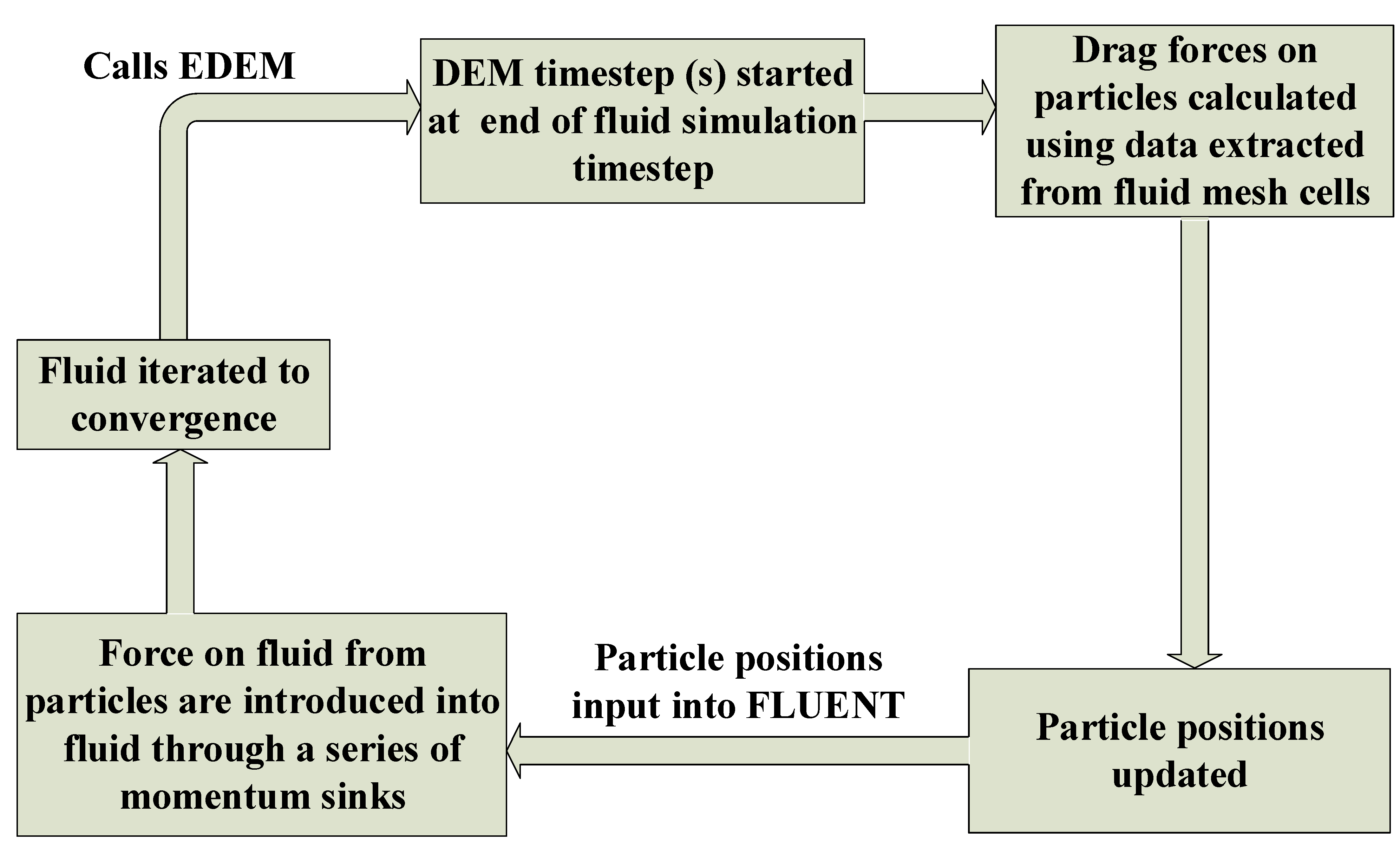
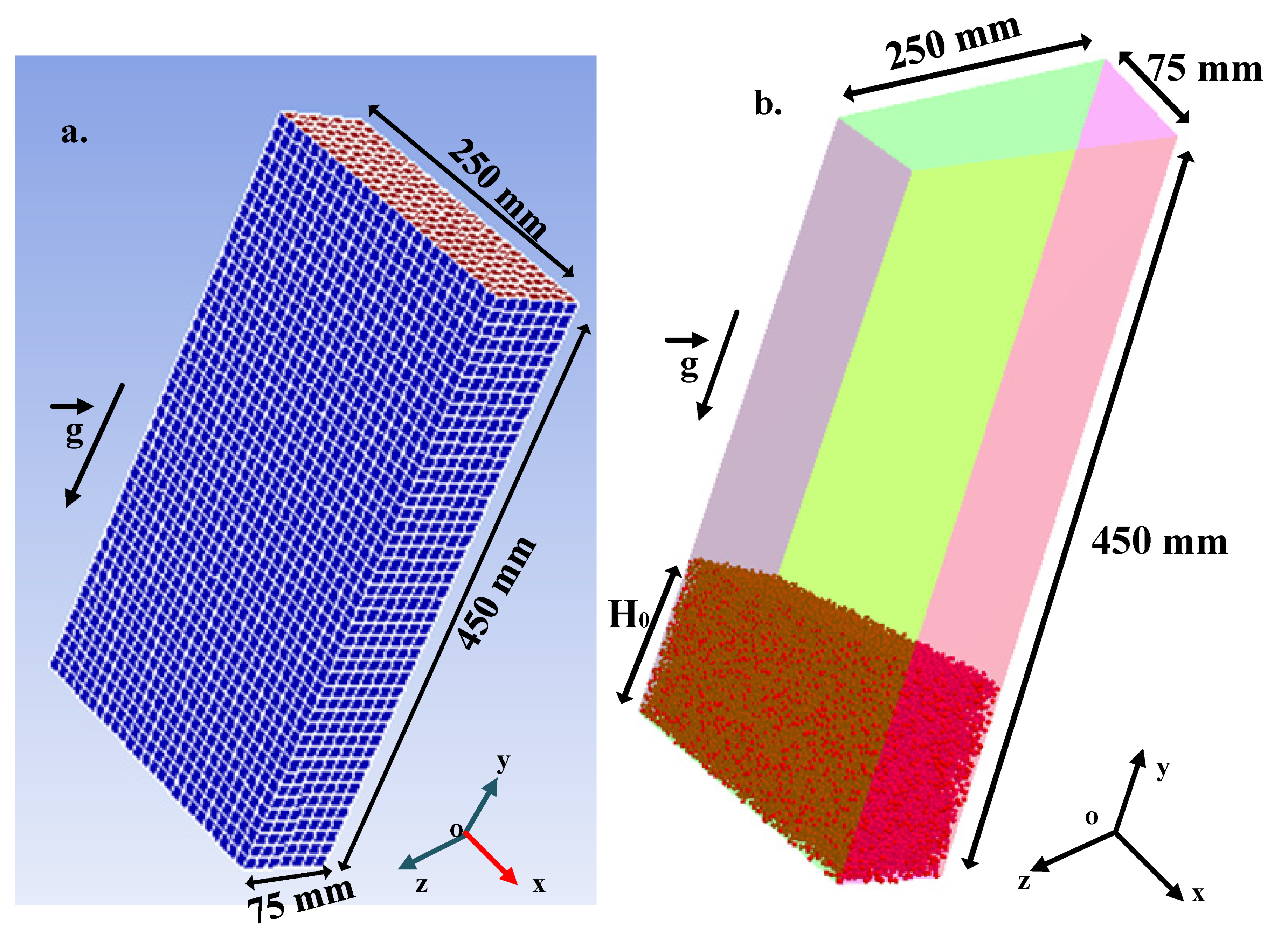
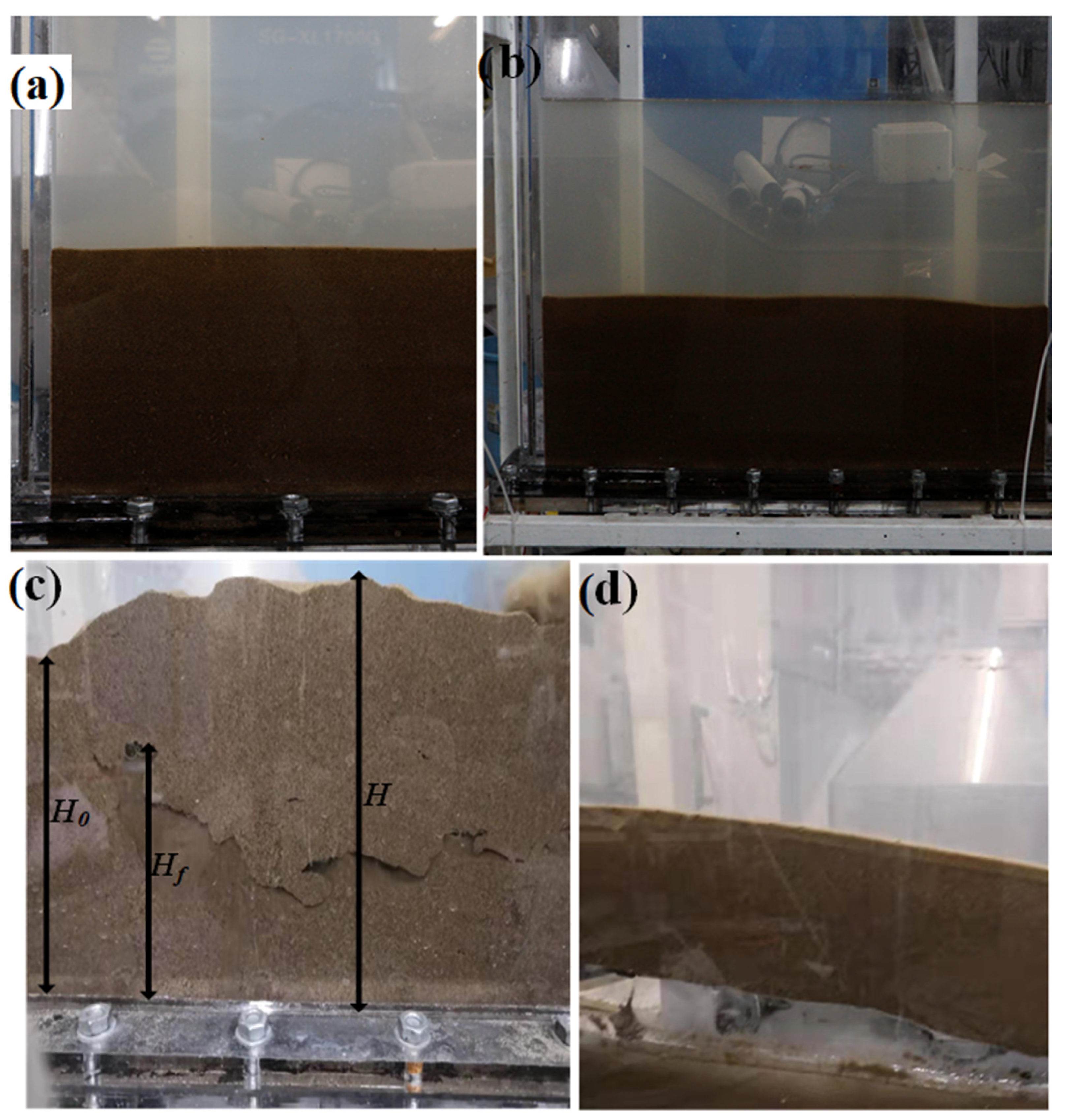
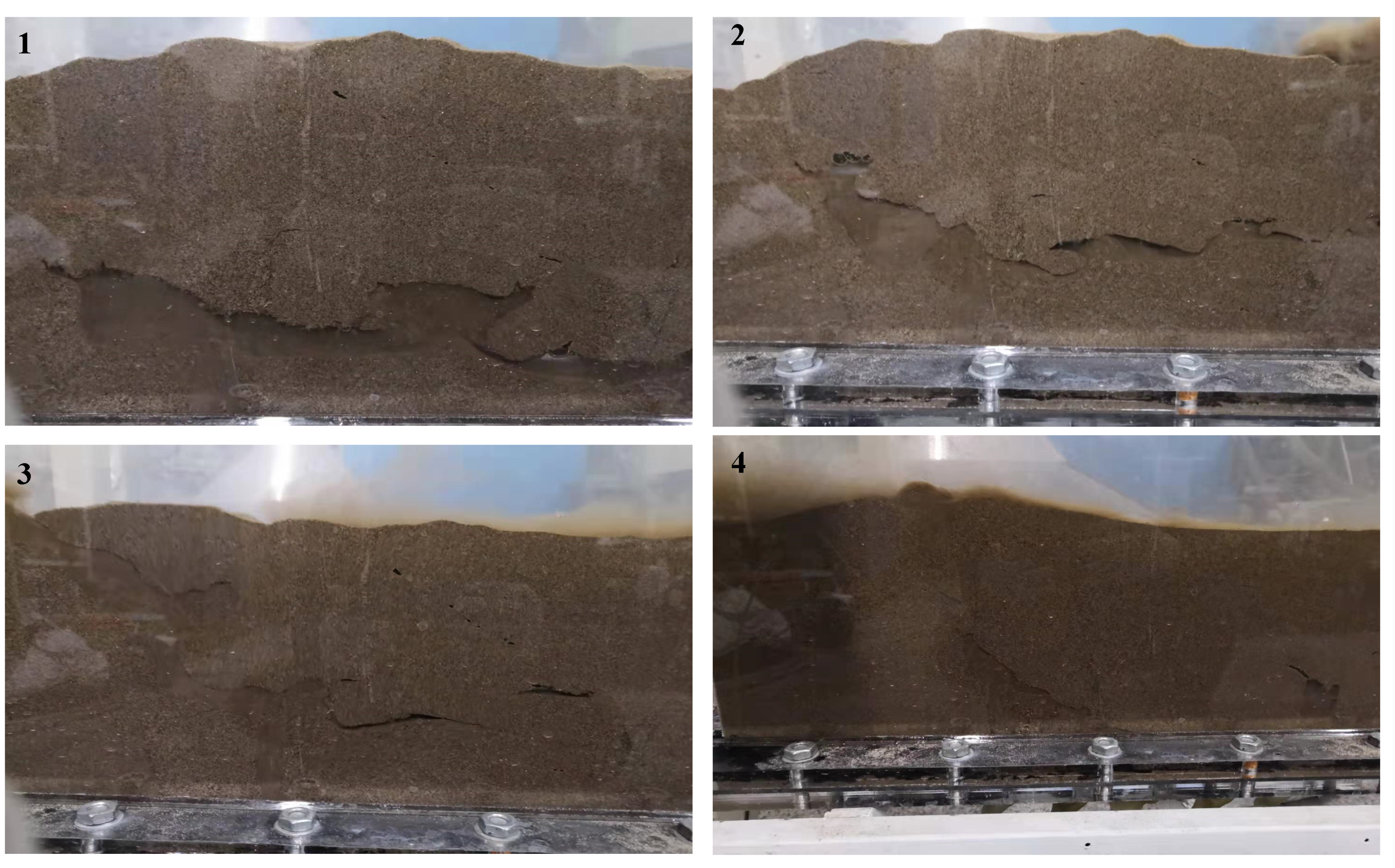
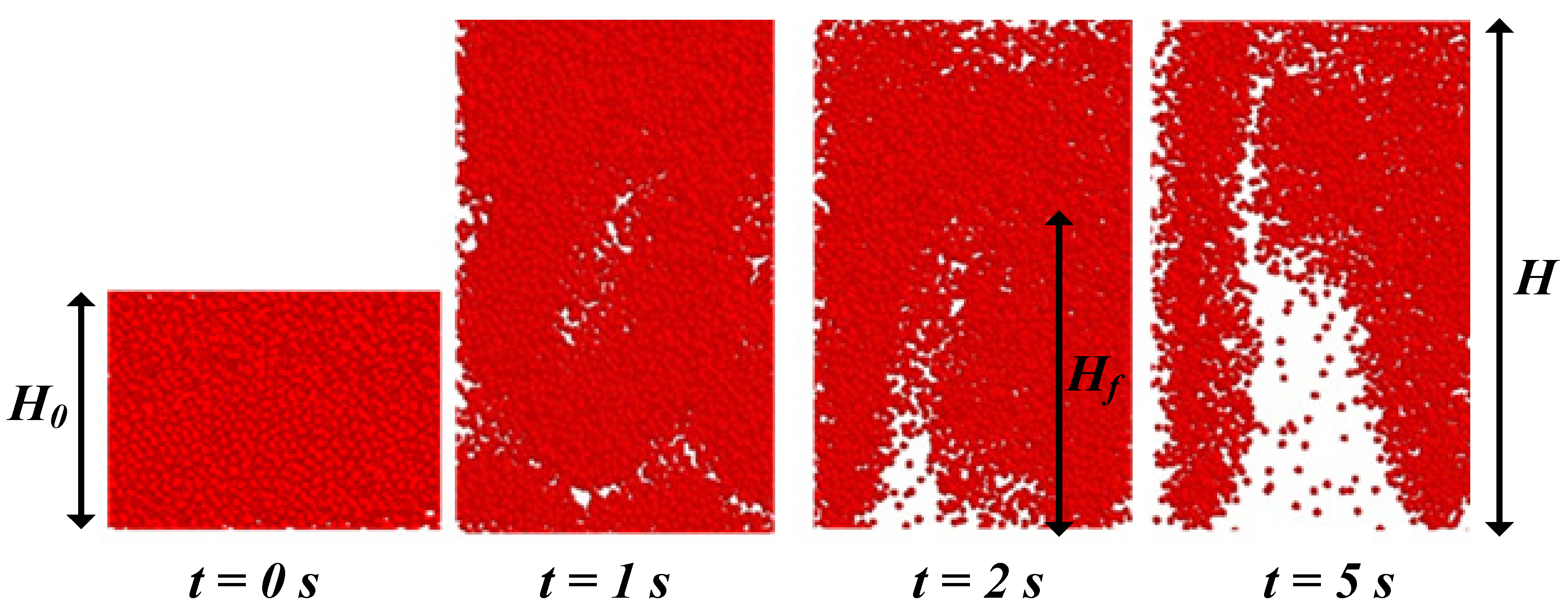
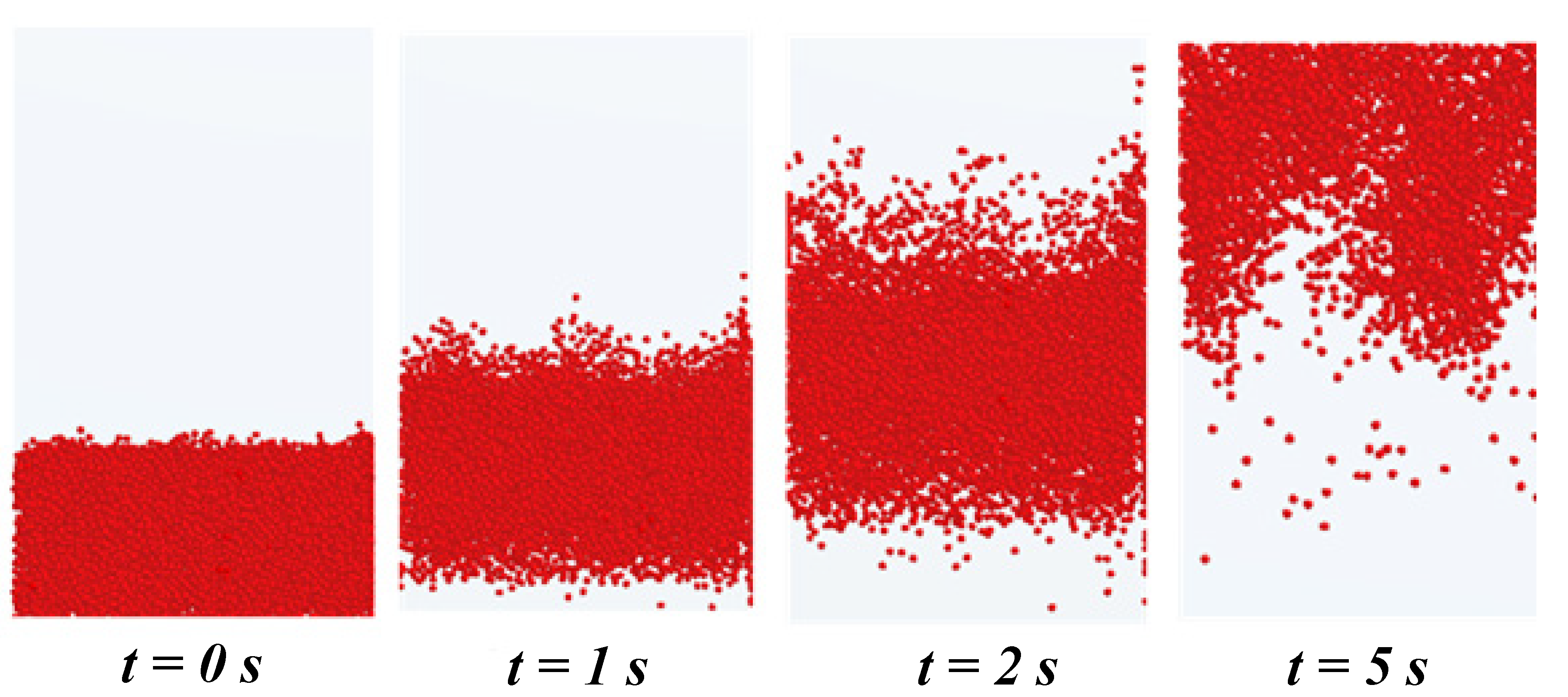
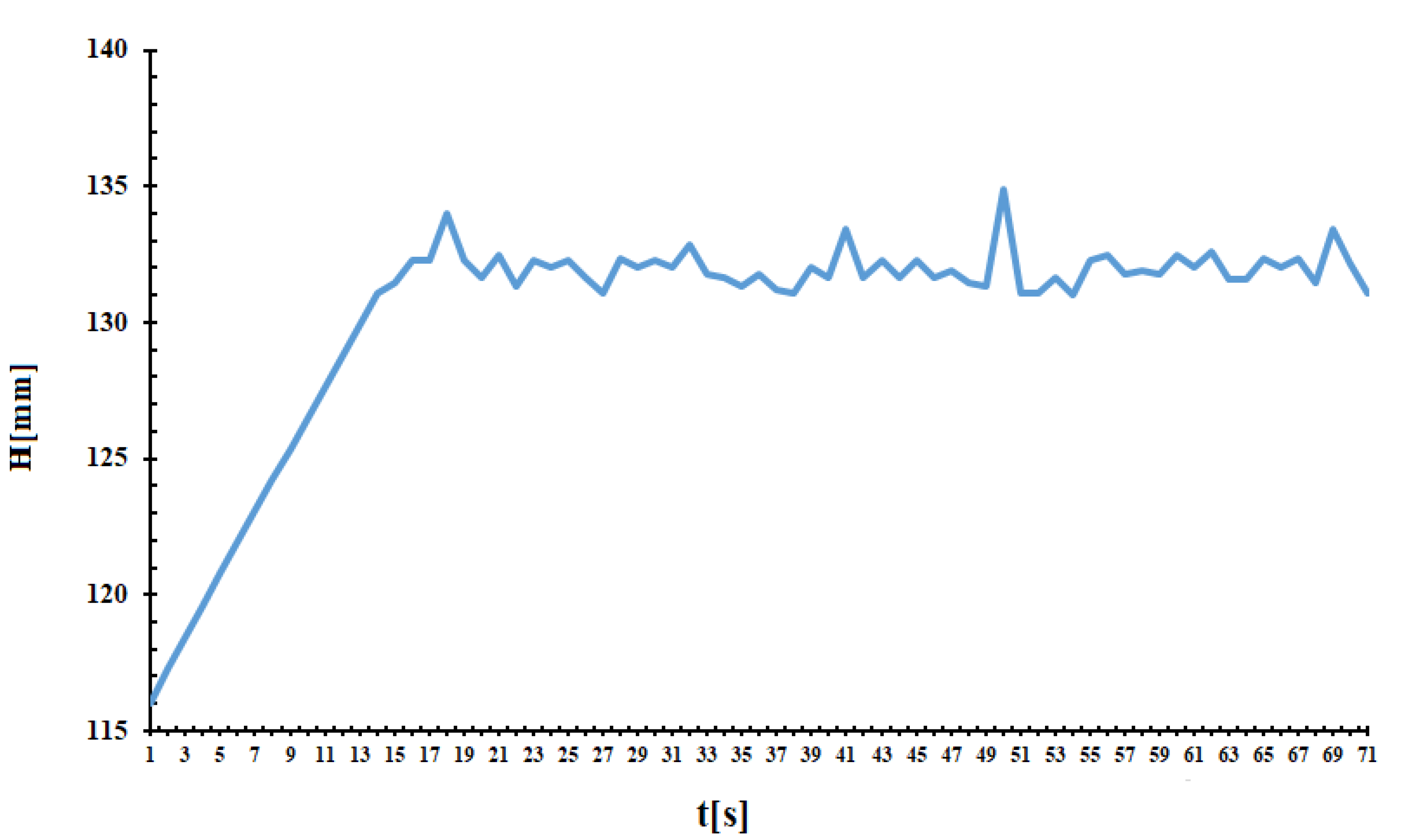
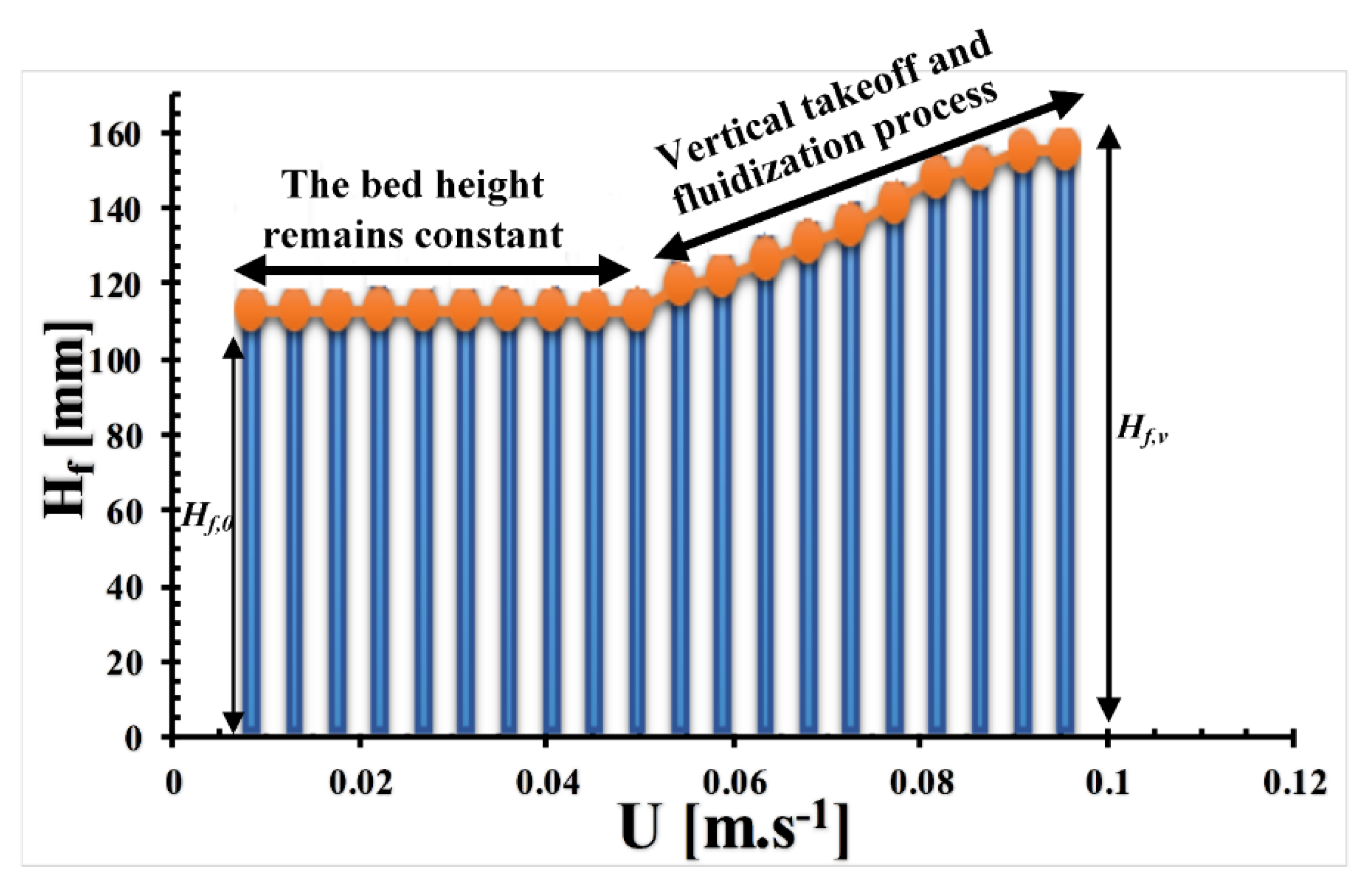
| Parameters | Values | Units |
|---|---|---|
| Fluid density | 1000 | kg/m3 |
| Solid density | 2500 | kg/m3 |
| Kinematic viscosity of the fluid | 2.0 × 10−6 | m2/s |
| Coefficient of friction of particle | 0.5 | - |
| Coefficient of restitution of particle | 0.5 | - |
| Grain average diameter | 1.610−3 | m |
| Initial volume fraction of sand | 0.52–0.62 | - |
| Gravity | 9.81 | (m/s2) |
| Duration of simulation | 10 | s |
Publisher’s Note: MDPI stays neutral with regard to jurisdictional claims in published maps and institutional affiliations. |
© 2021 by the authors. Licensee MDPI, Basel, Switzerland. This article is an open access article distributed under the terms and conditions of the Creative Commons Attribution (CC BY) license (https://creativecommons.org/licenses/by/4.0/).
Share and Cite
Drame, A.S.; Wang, L.; Zhang, Y. Granular Stack Density’s Influence on Homogeneous Fluidization Regime: Numerical Study Based on EDEM-CFD Coupling. Appl. Sci. 2021, 11, 8696. https://doi.org/10.3390/app11188696
Drame AS, Wang L, Zhang Y. Granular Stack Density’s Influence on Homogeneous Fluidization Regime: Numerical Study Based on EDEM-CFD Coupling. Applied Sciences. 2021; 11(18):8696. https://doi.org/10.3390/app11188696
Chicago/Turabian StyleDrame, Aboubacar Sidiki, Li Wang, and Yanping Zhang. 2021. "Granular Stack Density’s Influence on Homogeneous Fluidization Regime: Numerical Study Based on EDEM-CFD Coupling" Applied Sciences 11, no. 18: 8696. https://doi.org/10.3390/app11188696
APA StyleDrame, A. S., Wang, L., & Zhang, Y. (2021). Granular Stack Density’s Influence on Homogeneous Fluidization Regime: Numerical Study Based on EDEM-CFD Coupling. Applied Sciences, 11(18), 8696. https://doi.org/10.3390/app11188696






